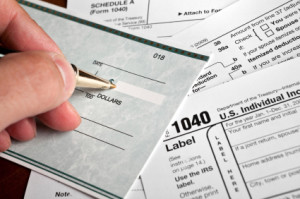
With the holiday season literally coming upon us in a few days, there are many stresses accompanying the happy times ahead. If you owe tax debt, one of those stresses should be the IRS. IRS levies rarely put anyone into a jolly mood. However, with the holidays also comes a fever of IRS collection actions.
Coming up to the holidays and shortly after them, the IRS kicks collections into gear and are often more aggressive than normal. This is due to an informal hold that the IRS has done annually referred to as the Holiday Stay of Collections. Technically, for about three weeks around the holidays, the IRS automated collections systems will generally not levy personal accounts or wages. This is not formally announced, but as we actively work with clients to resolve issues, we normally are privy to this information through phone conversations with the IRS. While the IRS claims that they take this time to reboot their computer system for upgrades for the New Year, we know that they are actually doing a kindness in taking three weeks off from collecting against tax debtors.
This sounds great right? Yes and no. The hold is great, but surrounding it is known as the Levy season. This is because the IRS is of course aware of the hold and it is their job to collect funds. However, what we see happen more often is that all the collection actions that should have taken place during those three weeks comes like a freight train once the Holiday Stay is completed. Some people think that they won the lottery because they were warned of serious collection action through notices and then nothing happened so they assume that the IRS forgot about them. That is definitely not the case. Tax debtors beware: we are approaching IRS levy season.
Read your letters:
In order for the IRS to take collection action, they must give you proper notice. This has to be served correctly (normally through the mail). These letters also provide a guide as to when the IRS will actually levy.
The first three mean warnings only, and they are titled as follows: 1) Amount Due Letter 2) Notice and demand, and 3) Notice of intent to levy. It’s the letter that follows this that is one to take note of, the IRS Letter 1058 “Final Notice of Intent to Levy”. On this letter, there is a notice date, and the debtor has 30 days to do something before collection action is taken. If this letter is received any time in the month of November, you could assume no action will be taken in December, however, be sure that after the Stay collection action will occur.
With IRS levy season and courtesy holiday stay of collections right around the corner, now is a good time to look for help. If you have received a letter from the IRS, or if they are threatening collections, today is the day to think about what you are to do with this. When we say today, we mean today, not after you are collected upon. Collections can be stopped and prevented, and the holidays are not the time to get garnished or levied. Give us a call 619-352-4188 to see what your options are during the holidays.


